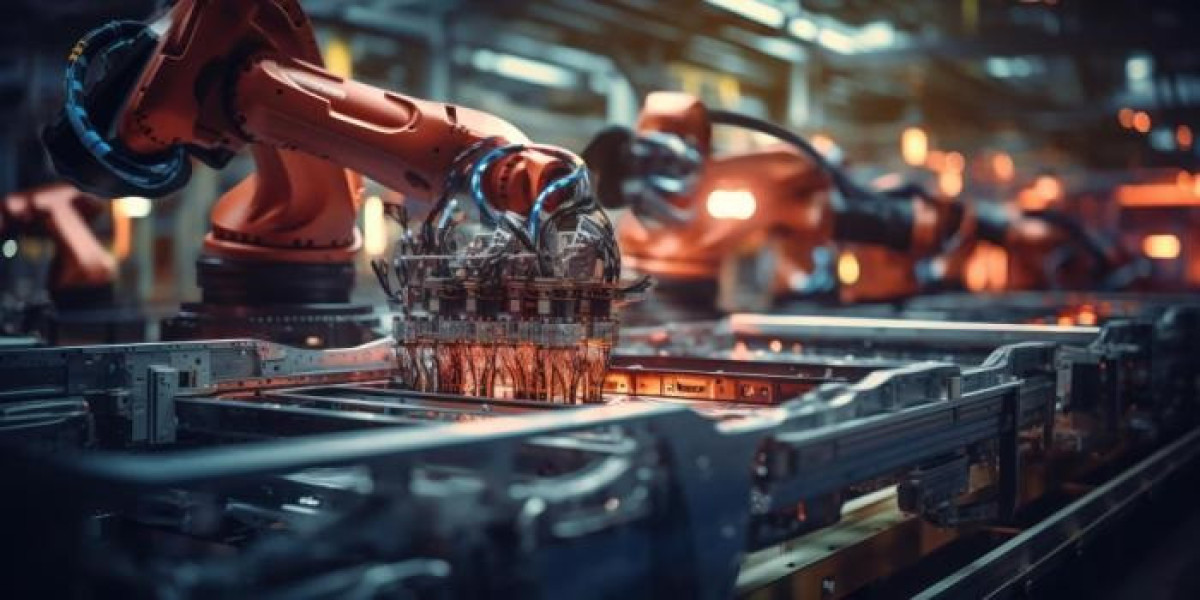Introduction
In the ever-evolving landscape of manufacturing, the integration of Information Technology (IT) services has become paramount for achieving efficiency, productivity, and competitiveness. With the emergence of Industry 5.0, the fusion of traditional manufacturing practices with cutting-edge technologies has paved the way for a new paradigm in the industry. This article explores the synergy between Manufacturing IT Services and Industry 5.0, elucidating how this collaboration is reshaping the manufacturing sector.
Understanding Manufacturing IT Services
Manufacturing IT Services encompass a spectrum of technologies, systems, and solutions tailored to streamline manufacturing processes, enhance operational efficiency, and optimize resource utilization. These services span across various domains such as Enterprise Resource Planning (ERP), Product Lifecycle Management (PLM), Supply Chain Management (SCM), Manufacturing Execution Systems (MES), Industrial Internet of Things (IIoT), and Artificial Intelligence (AI).
The primary objective of Manufacturing IT Services is to create an interconnected ecosystem wherein data flows seamlessly across different stages of production, enabling real-time monitoring, analysis, and decision-making. By leveraging advanced analytics, predictive maintenance, and automation, manufacturers can mitigate downtime, reduce costs, and improve overall productivity.
Industry 5.0: The Evolution of Manufacturing
Industry 5.0 represents the convergence of digital technologies with human-centric manufacturing principles, emphasizing collaboration between humans and machines. Unlike its predecessors, Industry 4.0, which focused primarily on automation and data exchange, Industry 5.0 seeks to integrate human skills, creativity, and intuition into the manufacturing process.
At the heart of Industry 5.0 lies the concept of "co-botting," where humans and robots work together in symbiosis, leveraging their respective strengths to accomplish tasks more efficiently and effectively. This paradigm shift signifies a departure from the notion of complete automation towards a more balanced approach that values human ingenuity and craftsmanship.
The Synergy Unveiled
The amalgamation of Manufacturing IT Services and Industry 5.0 heralds a new era of manufacturing characterized by interconnectedness, intelligence, and agility. This synergy brings forth several transformative outcomes:
Enhanced Connectivity: Manufacturing IT Services facilitate seamless connectivity between machines, sensors, devices, and enterprise systems, enabling real-time data exchange and collaboration. Industry 5.0 builds upon this foundation by fostering human-machine interaction, thereby creating a dynamic ecosystem where human operators can interact with machines intuitively.
Data-Driven Insights: The integration of advanced analytics, machine learning, and AI algorithms empowers manufacturers to derive actionable insights from vast volumes of data generated throughout the production cycle. By harnessing the power of predictive analytics, manufacturers can anticipate equipment failures, optimize inventory levels, and streamline production schedules, thereby enhancing efficiency and reducing waste.
Agile Manufacturing: Industry 5.0 advocates for flexible and adaptable manufacturing processes that can quickly respond to changing market demands and customer preferences. Manufacturing IT Services play a crucial role in enabling agility by providing tools for real-time monitoring, adaptive planning, and responsive execution. By embracing agile methodologies, manufacturers can minimize lead times, customize products on-demand, and enhance customer satisfaction.
Empowered Workforce: Contrary to the fear of job displacement associated with automation, Industry 5.0 manufacturing seeks to empower the workforce by augmenting human capabilities with technology. Manufacturing IT Services enable skill enhancement, training, and knowledge sharing through immersive technologies such as Virtual Reality (VR) and Augmented Reality (AR). By providing workers with the tools and training needed to operate in a digitized environment, manufacturers can foster a culture of innovation and continuous improvement.
Sustainable Practices: The synergy between Manufacturing IT Services and Industry 5.0 manufacturing extends beyond operational efficiency to encompass environmental sustainability. By optimizing energy consumption, reducing waste, and adopting eco-friendly manufacturing practices, manufacturers can minimize their carbon footprint and contribute to a greener future. Additionally, Industry 5.0 promotes the concept of circular economy, wherein products are designed for longevity, reparability, and recyclability, thus minimizing resource depletion and waste generation.
Future Perspectives: Navigating the Road Ahead
As the manufacturing industry continues to evolve, the synergy between Manufacturing IT Services and Industry 5.0 will play a pivotal role in shaping its future trajectory. However, several challenges lie ahead, including cybersecurity risks, data privacy concerns, and workforce reskilling requirements. Manufacturers must prioritize investments in robust cybersecurity measures, data governance frameworks, and talent development initiatives to navigate these challenges successfully.
Furthermore, collaboration and knowledge sharing among industry stakeholders, academia, and government bodies will be essential for driving innovation and fostering a conducive ecosystem for Industry 5.0 adoption. By embracing a collaborative mindset and leveraging emerging technologies, manufacturers can unlock new opportunities for growth, sustainability, and prosperity in the digital age.
Conclusion
The synergy between Manufacturing IT Services and Industry 5.0 represents a paradigm shift in the manufacturing industry, ushering in an era of interconnectedness, intelligence, and agility. By harnessing the power of advanced technologies, human ingenuity, and collaborative partnerships, manufacturers can achieve unprecedented levels of efficiency, productivity, and competitiveness. As we navigate the complexities of the Fourth Industrial Revolution, embracing this synergy will be paramount for unlocking the full potential of Industry 5.0 and shaping the future of manufacturing.








